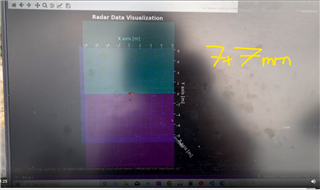Other Parts Discussed in Thread: IWRL6432
Tool/software:
Dear TI Support,
I am using the IWR6843AOPEVM to detect small obstacles in the air, specifically a wire with dimensions 0.5 cm × 0.5 cm. I am currently using the "Best Range Resolution" configuration from the mmWave Demo Visualizer, with range-related parameters adjusted for optimal performance to suit my application.
In the mmWave Demo Visualizer interface, I noticed the "RCS" parameter. After reading about it, I modified this parameter to match my wire’s size and then clicked "SAVE CONFIG TO PC". However, when I opened the saved .cfg file, I could not find any parameter related to RCS.
Could you please clarify how the RCS parameter is applied in the configuration file and whether it affects the radar’s actual processing?
Thank you for your assistance.
Best regards,
Huy



